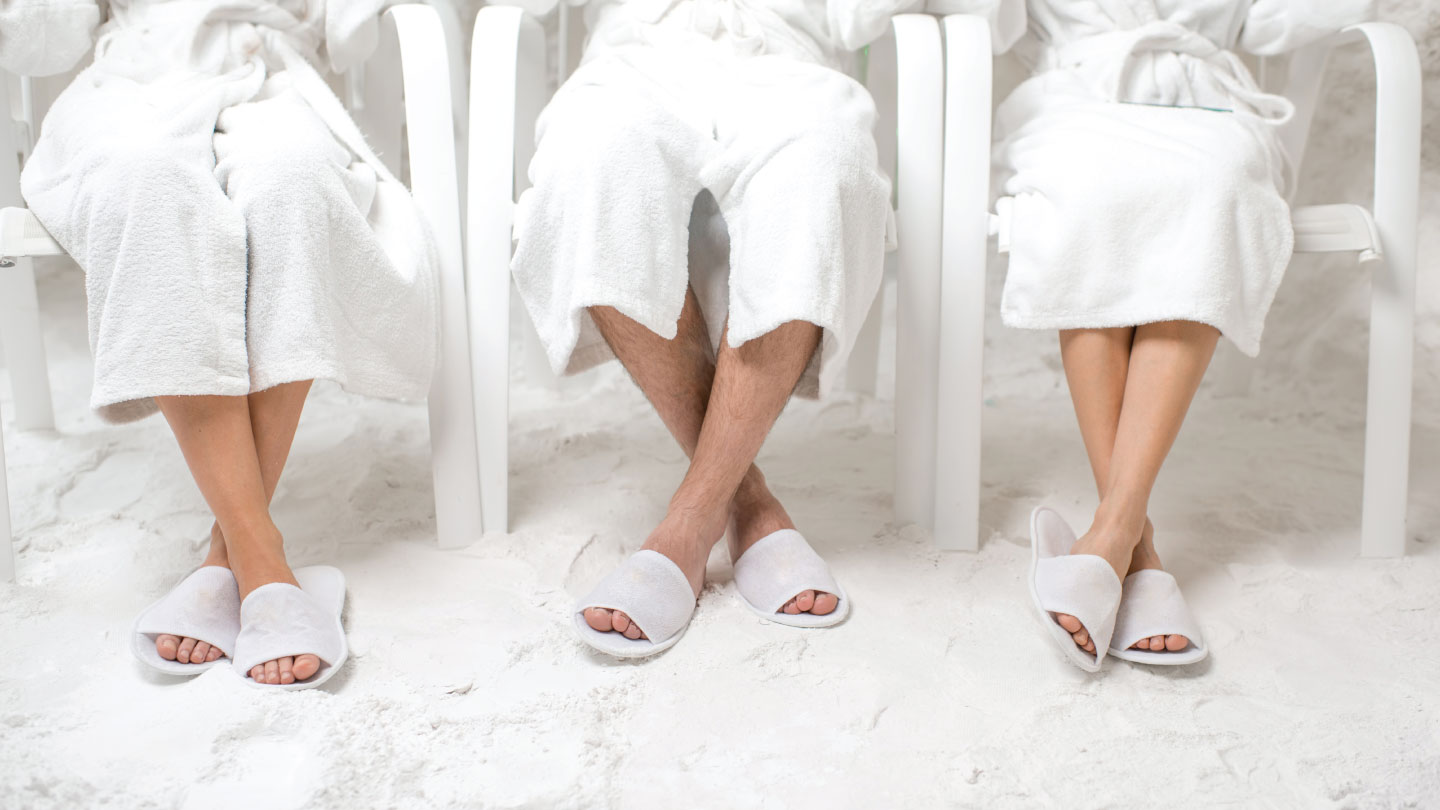Miscellaneous
Breathing in the Trend: Why Salt Rooms Are the Next Big Thing in Wellness (Halotherapy)
From boutique spas to medical wellness centres, salt rooms, also known as halotherapy chambers, are attracting global attention.

Halotherapy, also called salt therapy, is quickly becoming one of the most talked-about wellness trends of the decade. Once confined to the natural salt caves of Eastern Europe, today’s salt rooms recreate that microclimate using modern technology: walls lined with crystalline salt, salt spread underfoot, and fine dry salt aerosol therapy delivered into the air.
From respiratory health to skin healing and general stress reduction, people are flocking to salt rooms as a natural adjunct to their wellness routine. But is it more than just hype? Let’s dive into what halotherapy is, its reported benefits, the scientific evidence, and who might benefit most.
Related Story: Aromatherapy For Every Personality Type
What Is Halotherapy?
The word ‘Halos’ in Greek means salt. So, halotherapy involves spending time in a salt-saturated environment, either inhaling fine particles of salt via a generator (active halotherapy) or simply relaxing in a salt-lined room where the air naturally contains dispersed particles (passive halotherapy).
Its roots trace back to the 19th century, when Polish physician Dr. Feliks Boczkowski observed that salt mine workers seemed to have fewer respiratory problems compared to others. This led to the development of speleotherapy (using natural salt caves for therapy of chronic respiratory issues like asthma), which modern salt rooms aim to replicate.
How Salt Therapy Is Used:
Salt therapy is usually offered in 30 to 45-minute sessions where clients sit or lie in a specially designed salt room. The environment is controlled for humidity, particle size, and cleanliness, as these factors influence the effectiveness of the treatment.
Types Of Halotherapy:
- Dry salt therapy: This is the most common form and is carried out in active salt rooms using a halogenerator. Microparticles of dry salt are inhaled into the lungs and absorbed by the skin, potentially helping with respiratory and dermatological issues.
- Wet salt therapy: This involves using saline water in different ways, such as bathing in mineral-rich saltwater, gargling, drinking salt solutions, or performing nasal irrigation with saline. While it shares roots with traditional salt remedies, wet salt therapy is considered distinct from halotherapy, which specifically refers to inhaling dry salt particles.
Related Story: What is Cryotherapy
Reported Benefits of Halotherapy:
- Respiratory Health
A 2022 review, published in the Journal of Education, Health and Sport, concluded that halotherapy may improve lung function and quality of life in asthma and COPD (Chronic Obstructive Pulmonary Disease) patients when used alongside standard treatments.
- Skin Conditions
Salt is known for its antimicrobial and anti-inflammatory effects. The research: “Effectiveness of the Salt Therapy” shows that halotherapy may help reduce redness, dryness, and irritation in psoriasis and atopic dermatitis.
- Stress Relief & General Wellness
Beyond the physiological effects, spending time in a quiet, softly lit salt room can promote relaxation, improve sleep, and lower perceived stress levels. While these benefits are harder to measure clinically, they remain one of the biggest draws for wellness seekers.
Related Story: Everything You Need to Know About Hypnotherapy
What the Science Says:
The Global Wellness Institute notes that while several small trials have shown promise, many studies are limited by small sample sizes, inconsistent treatment protocols, and lack of placebo controls. More rigorous, large-scale trials are still needed before halotherapy can be firmly recommended as a medical therapy.
The American Lung Association also cautions that while halotherapy appears safe for most people, it should be seen as a complementary therapy rather than a replacement for prescribed medical care.
Who Should Try Halotherapy?
May Benefit Most:
- People with mild to moderate asthma or chronic bronchitis (as an adjunct therapy).
- Individuals with COPD who want supportive relief in addition to standard care.
- Those with skin conditions like psoriasis or eczema.
- Wellness enthusiasts seeking stress reduction, better sleep, or allergy relief.
Should Use Caution or Avoid:
- People with severe respiratory illness or active infections.
- Those with compromised immune systems (consult a doctor first).
- Pregnant women and very young children (due to limited research).
Related Story: Everything You Need to Know About Logotherapy
Halotherapy has moved from salt caves of Eastern Europe into modern spa culture and wellness clinics worldwide. While the research is still evolving, there’s encouraging evidence that salt therapy may support respiratory health, skin healing, and stress relief, especially when used alongside conventional treatments.
For those curious, trying a session in a reputable salt room may be a safe and restorative experience. Just remember: it’s not a cure-all, but it might be a breath of fresh (in this case salty) air for your wellness routine.
Take care of your body and mind to feel your best. Sign up here to unlock holistic health.
EXPLORE MORE
Tired of the morning chaos? Try these simple, practical tips to make school mornings calm, quick, and stress-free.
Hundreds of thousands of people die from drowning every year, yet most of these deaths are preventable. Here’s how simple actions, community measures and better awareness save lives.
How spilling the tea on you-know-who can strengthen bonds, sharpen reputations, and make us happier.
Artificial turf is everywhere, from your kid’s soccer field to the local playground, but what’s really hiding beneath those green plastic blades? Let’s shed light on this popular grass alternative.




.jpg)

.jpg)
